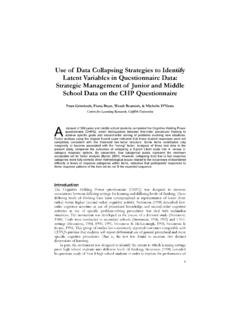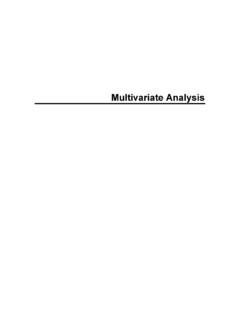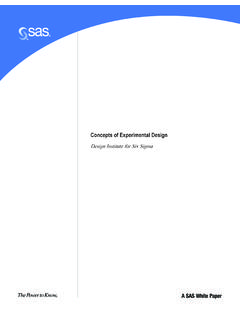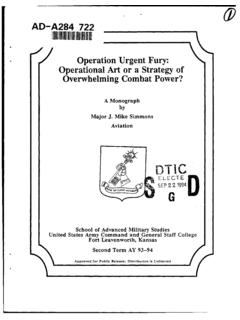Transcription of Factor analysis results - grimbeek.com.au
1 Factor analysis reporting Example of Factor analysis method section reporting The method followed here was to first examine the personal characteristics of the participants with a view to selecting a subset of characteristics that might influence further responses. Then, survey responses were analysed at the item level, using figures, tables, or text alone, to provide a first impression. These item level responses were scrutinised for underlying patterns via Factor analytic procedures (Note that all procedures reported here utilise SPSS).
2 A prerequisite for including an item was that responses were not too badly skewed ( , 90% or more of responses clustered in single cell) and that more generally, the level of response to that item was not insufficient (<15-20%) to destabilise analysis . The factors identified in this fashion correspond to the primary topics or latent variables to which correspondents seem to be responding in terms of various related items. The protocol adopted here for Factor analysis was to use default settings initially (Principal Axis Factor - PAF) and to rotate the matrix of loadings to obtain orthogonal (independent) factors (Varimax rotation).
3 The prime goal of Factor analysis is to identity simple (items loadings > on only one Factor ) that are interpretable, assuming that items are factorable (The Kaiser-Meyer-Olkin measure of sampling adequacy tests whether the partial correlations among variables are small. Bartlett's test of sphericity tests whether the correlation matrix is an identity matrix, indicating that the Factor model is inappropriate). Once clearly defined and interpretable factors had been identified ( Factor loadings =>.)
4 10 were illustrated via an included table even though only item loadings > were considered relevant to Factor loadings), and responses related to these factors were saved in the form of Factor scores. These Bartlett Factor scores are equivalent to sub-scale or scale scores with means of zero and standard deviations of one (z-scores), and with participants credited with separate scores in relation to each identified Factor . Since these Factor scores translate the ordinal responses to individual items into standardised z-scores with interval properties, the relationship between responses to these factors and personal/demographic characteristics were probed via multivariate (MANOVA) or univariate (ANOVA) parametric tests.
5 Where significant main effects or interaction effects were observed, the locus of these was determined via nonparametric tests of significance, usually Chi-Square contingency tables or Kruskal-Wallis nonparametric analyses of variance. The rationale for the analytic approach outlined here is that it parallels the commonly accepted protocol for examining univariate and multivariate ANOVA, which typically proceeds by testing for significance at the most general level of association and then, once that is established, tests for significance at specific levels of the independent variable/s ( , via pairwise comparisons).
6 A positive aspect of the protocol outlined above is that it is conservative in so much as significance at the scale level is a prerequisite to examining significant associations at the item level. This methodology minimises noise due to individual difference, etc. The alternative is an item-by-item approach where every questionnaire response is crossed with every variable representing personal characteristic, a shotgun process that increases the 1 Factor analysis reporting number of reports of significance at the cost of exponentially increasing the number of required analyses while missing the insight provided via procedures that identify deeper patterns of responses to items.
7 The other downside of mass item analysis is that the acceptable level of significance per item has to be adjusted to take account of the sheer number of individual tests of significance, an adjustment that excludes all but the most extreme outcomes ( , p<.001), thus nullifying the effect of the initial increase in the number of hits. Example of Factor analysis result section reporting A Principal Axis Factor (PAF) with a Varimax (orthogonal) rotation of 22 of the 24 Likert scale questions from this attitude survey questionnaire was conducted on data gathered from 316 participants.
8 An examination of the Kaiser-Meyer Olkin measure of sampling adequacy suggested that the sample was factorable (KMO=.698). table 1. Obliquely rotated component loadings for 22 survey items* Component 1 2 3 4 5 6 7 8 Understanding .801 .121 Interpreting .790.
9 209 Understanding questions .646 .151 .167 Lecturers .543 .253 Writing assignment .444 .287 .176 .202 .192 Researching .420 .111 .179 .119 .275 Writing genre .895 .136 .134 .126 Writing academic .819 .128 Knowing how.
10 194 .516 Write friends .891 Friends .869 Write tutorials .121 .862 .169 Tutorials -140.









